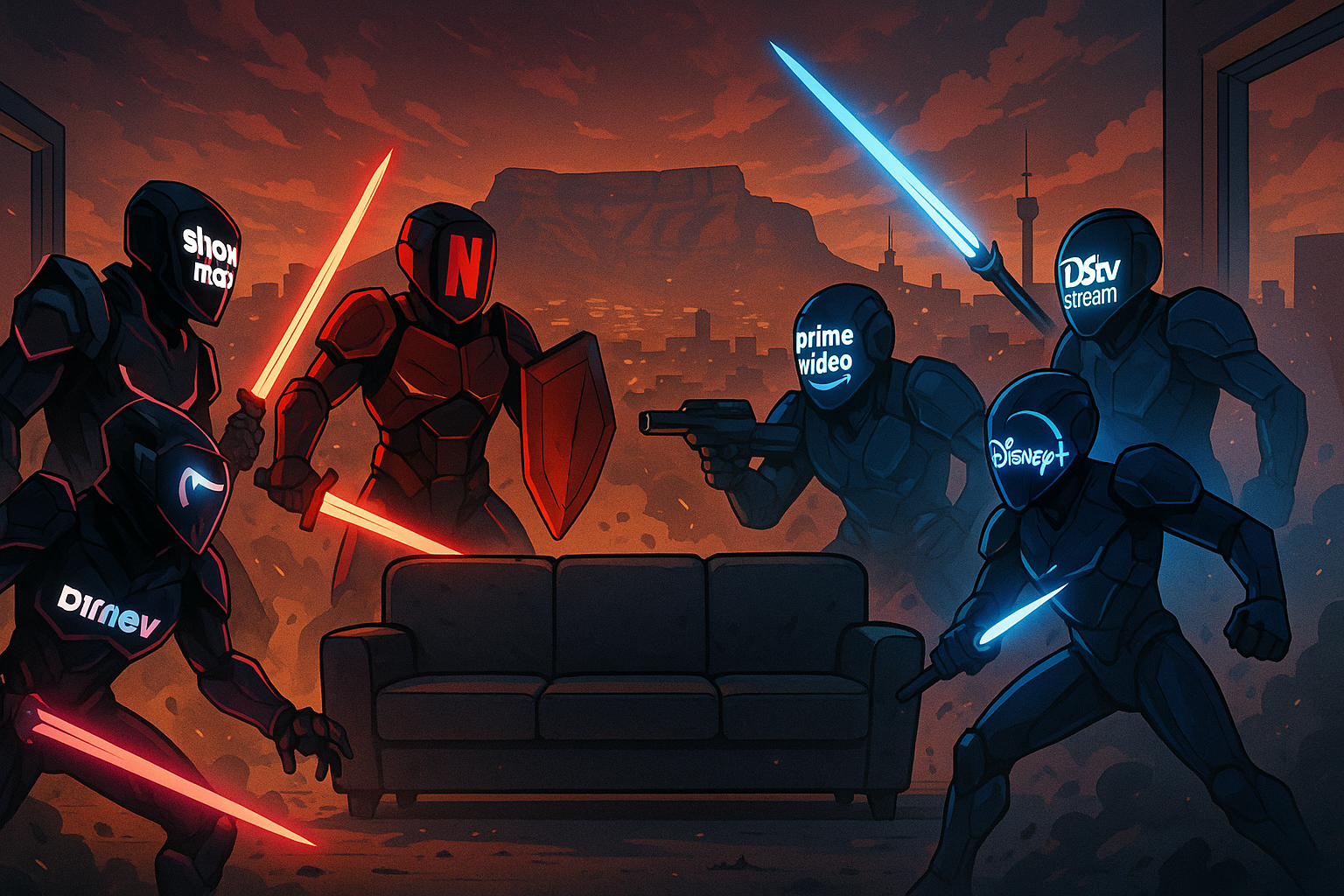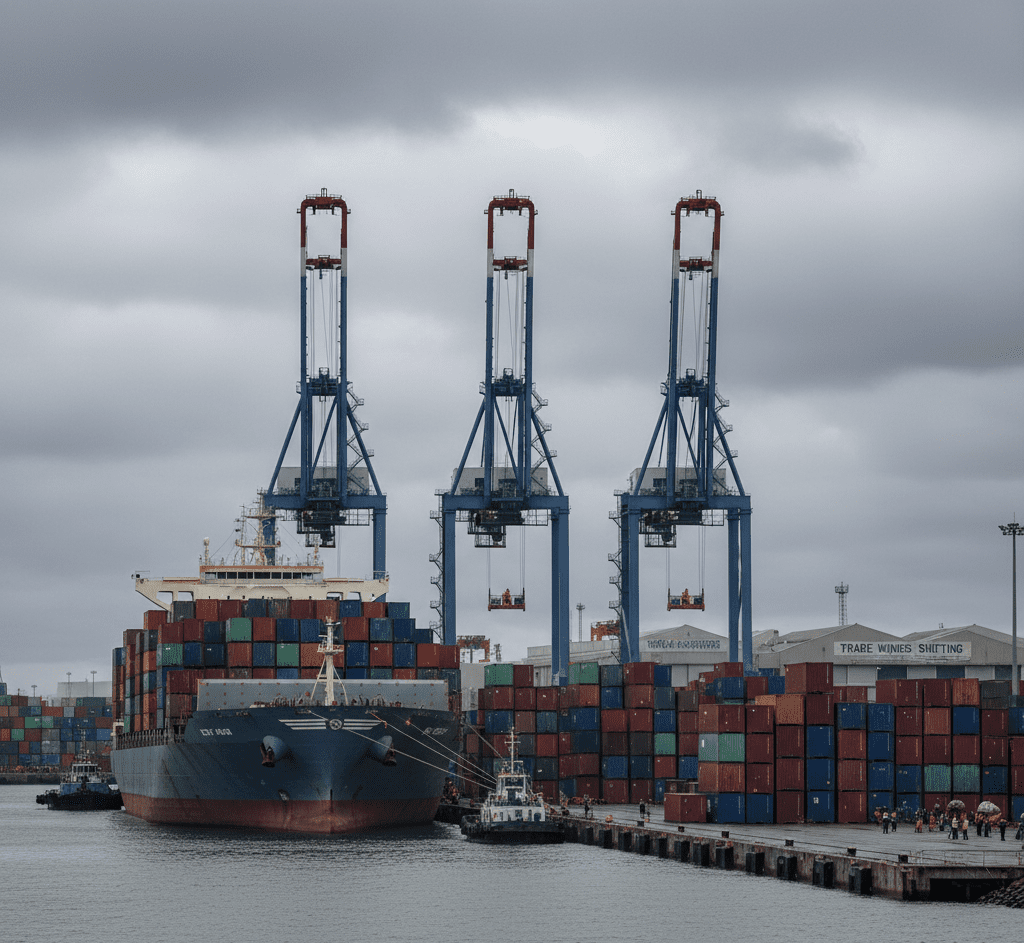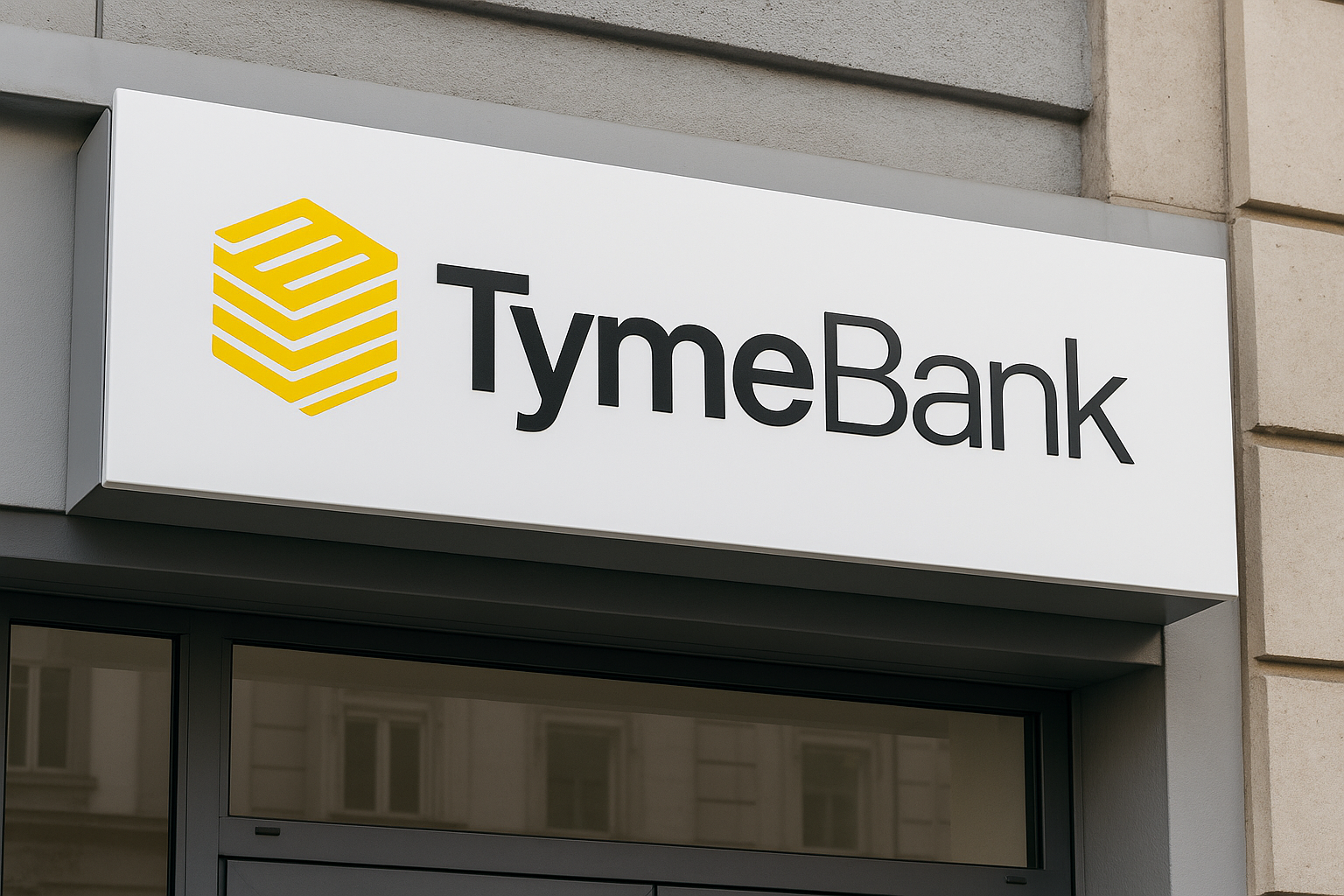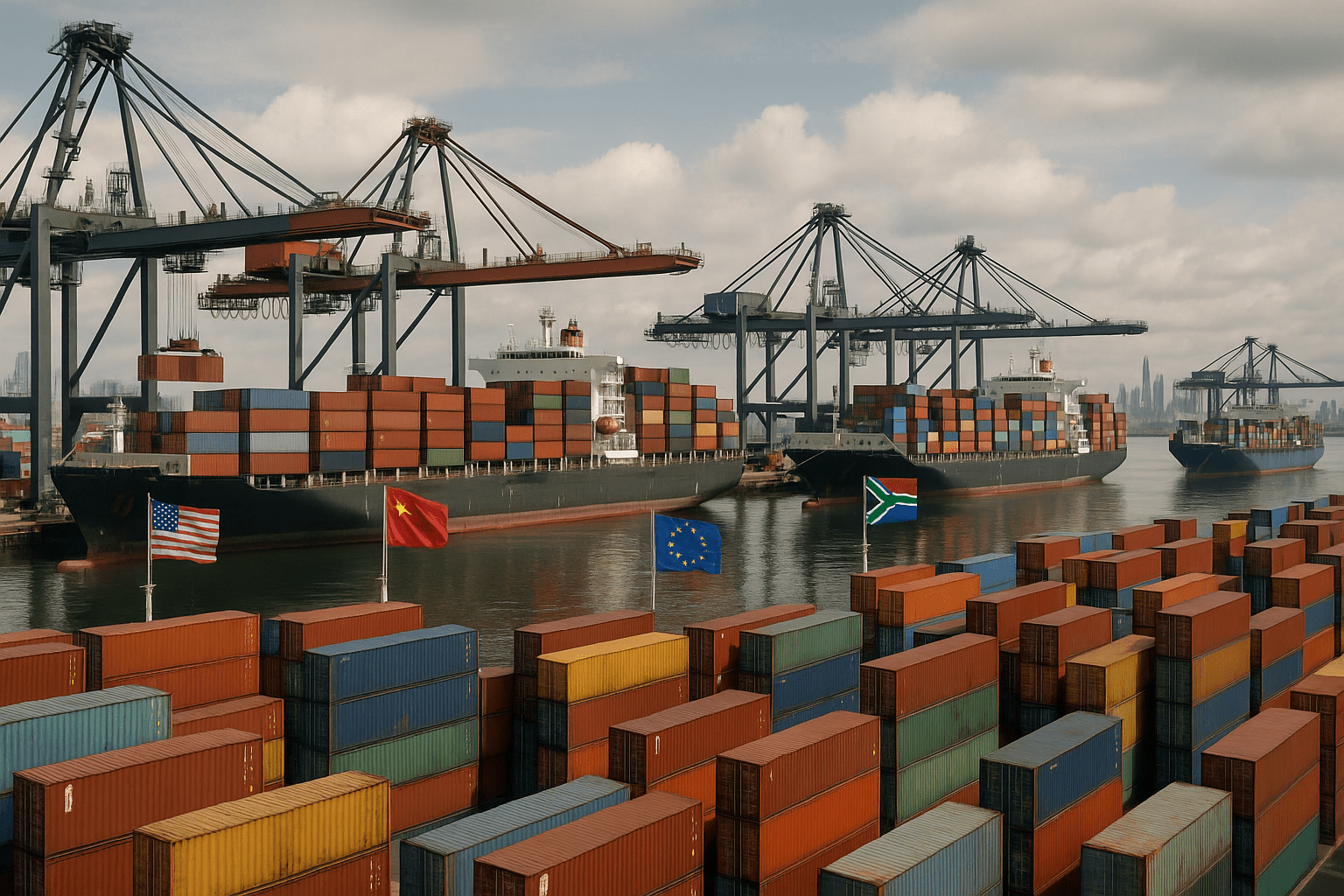South Africa’s Streaming Revolution: Who’s Winning the Battle for Your Couch Time?

South Africa’s Streaming Revolution
Remember when your evening entertainment was dictated by DStv’s rigid schedule? Those days are rapidly becoming a distant memory. South Africa’s streaming landscape has undergone a seismic shift over the past three years, transforming living rooms nationwide into dynamic battlegrounds where global giants like Netflix and Amazon Prime Video fiercely contend with local champions like Showmax for your valuable monthly subscription and, more importantly, your undivided attention. This article delves into the unexpected turns of this revolution, revealing who’s truly captivated the hearts and wallets of South African viewers, and what it means for the future of entertainment in the country.
The Current Champions: A Shifting Throne and Underdog Triumphs
While Netflix traditionally wore the crown in the South African streaming market, holding a significant share of approximately 30% of the market (according to recent industry estimates), its lead is no longer as comfortable as it once seemed. Amazon Prime Video is rapidly closing the gap, vying for second place at around 26-27%, while Showmax solidifies its position as a formidable local contender, typically around 25%.
However, simply looking at market share percentages can be misleading. Consider DStv Stream, which boasts a higher subscriber penetration (around 16%) than Showmax (approximately 11% of the total population having access to the service as per MAPS™ data). This highlights a crucial distinction: market share often reflects active subscribers, while penetration speaks to the broader reach and accessibility of a service, indicating that a significant portion of the population is still tied to traditional pay-TV habits, even as they explore streaming. It’s not just about apples to oranges; it’s about understanding the diverse ways South Africans consume content.
Showmax’s Strategic Masterstroke: Localisation as the Key to Conquest
Let’s talk about what many are calling the streaming upset of the decade. In early 2024, Showmax didn’t just tweak their prices – they aggressively slashed them by nearly 50%. This was undeniably bold and carried significant risk, yet the subsequent numbers don’t lie. This wasn’t merely a move to make streaming cheaper; it was a profound understanding of the South African consumer. Showmax intuitively grasped what many international competitors initially overlooked: South Africans desire entertainment that genuinely resonates with their culture, speaks their languages, and is priced within their economic realities.
The result? This strategic pricing, coupled with a deepened commitment to local content, propelled Showmax to become the continent’s biggest streaming service, unseating Netflix from its long-held African throne. This wasn’t merely luck; it was a meticulously planned strategy that prioritised the local market’s unique needs over a global template.
Why Netflix Should Be Wary (Even While Still Leading)
Netflix finds itself in a peculiar predicament. Despite retaining the largest individual market share, its 30% feels less like a comfortable lead and more like a bullseye. The primary challenge for the global streaming behemoth lies in balancing its vast international content machine with the growing demand for authentic local South African stories. Crafting shows that appeal equally to audiences in Johannesburg and Jacksonville is an arduous task. Meanwhile, local competitors are doubling down on Mzansi-specific content, investing heavily in local talent, production, and storytelling, making Netflix’s balancing act increasingly challenging. The ability to seamlessly integrate deeply local narratives into a globally curated library will be critical for Netflix’s sustained dominance.
Amazon Prime Video: The Stealthy Success Story
Amazon Prime Video’s quiet ascent to second place, often unnoticed amidst the Netflix-Showmax drama, is a testament to a clever strategy: bundling. Their secret weapon isn’t just a content library, but the seamless integration of streaming with Amazon’s broader ecosystem of services, including e-commerce perks. This approach—why pay for just streaming when you can get shopping benefits too?—works particularly well in urban centres where Amazon’s retail presence is strongest. It leverages existing customer loyalty and provides added value that purely content-focused platforms struggle to match.
DStv Stream: Teaching Old Dogs New Tricks
MultiChoice, the traditional pay-TV giant, deserves considerable credit for not succumbing to the fate of a Blockbuster. Instead of resisting the inevitable streaming revolution, they shrewdly joined it. DStv Stream’s impressive 16% penetration (as distinct from active subscription numbers often cited for other platforms) clearly indicates that brand loyalty, coupled with a willingness to evolve with audience consumption habits, can indeed matter. They’ve leveraged their existing subscriber base and extensive content rights to transition many into the streaming realm.
However, the road ahead for DStv Stream, like all players, is not without hurdles. Announced price increases for 2025, which could reach up to 7.9% for certain packages, will test the resilience of their subscriber base. In a market where Showmax recently demonstrated the disruptive power of aggressive price cuts, such increases could compel subscribers to actively shop for more affordable alternatives.
Disney+: The Premium Player’s Niche
Disney+ launched in South Africa in May 2022 with a clear, differentiated game plan: position itself as a premium service. Instead of engaging in a price war, they bet heavily on the allure of their exclusive content—the Marvel Cinematic Universe, Star Wars saga, Pixar animations, and a vast library of childhood nostalgia. This strategy, targeting families and dedicated fans willing to pay a premium for specific, high-demand content, has secured their spot comfortably within the top five. While not designed for mass market penetration, it effectively captures a loyal segment of the market.
The Numbers That Truly Matter: Understanding the Transformation
The underlying data truly illustrates the profound transformation of South Africa’s entertainment consumption habits. Recent data from the Marketing All Product Survey (MAPS™) for the period of July 2023 to June 2024 indicates that over 8.4 million South Africans now have access to paid or subscription-based on-demand streaming services. This marks a significant increase in streaming penetration, which has surged by approximately 139% since 2021.
Industry projections, such as those from PwC’s Africa Media & Entertainment Outlook 2024-2028, estimate the Over-The-Top (OTT) streaming market in South Africa to grow at a Compound Annual Growth Rate (CAGR) of around 8.5% to reach an impressive R6.8 billion (approximately $370 million USD) by 2028, up from R4.5 billion in 2023. This growth is underpinned by an expected addition of nearly 1.6 million OTT subscribers by the end of 2028. While there’s still considerable room for growth, particularly in underserved segments, the era of effortless, rapid expansion might be drawing to a close.
What’s Actually Driving These Changes? A Deeper Dive
The driving forces behind South Africa’s streaming revolution are far more nuanced than simply competitive pricing.
- Local Content is King: This isn’t just a “nice-to-have” anymore; it’s an absolute necessity. South Africans are increasingly demanding narratives that authentically reflect their lived experiences, cultural diversity, and linguistic richness. Showmax, with its deep investment in Mzansi stories and collaborations with local production houses, has demonstrably understood and capitalised on this. Netflix is on a steeper learning curve to strike the right balance between its global content behemoth and truly resonant local offerings. This preference for local content creates a fascinating dynamic where global platforms, despite their virtually unlimited budgets, can be outmanoeuvred by local services that simply understand their audience better.
- Affordability and Accessibility: In a highly price-sensitive market, the perceived value-for-money, heavily influenced by data costs and disposable income, significantly sways consumer choices. This has led to the proliferation of flexible, mobile-first packages and a burgeoning interest in ad-supported streaming tiers, which offer a more accessible entry point for millions.
- Infrastructure Development: The continuous rollout and improvement of internet infrastructure, particularly fibre-to-the-home (FTTH) and 5G networks in urban and peri-urban areas, are silent yet powerful enablers. As of early 2025, internet penetration in South Africa stood at approximately 78.9% of the population (DataReportal Digital 2025: South Africa report), with median mobile download speeds around 51.43 Mbps and fixed internet speeds at 48.34 Mbps. Fibre adoption, in particular, has surged, with FTTH subscriptions increasing from 1.49 million in 2023 to 2.47 million in 2024, demonstrating a clear shift towards stable, high-speed home connectivity.
- The Load Shedding Factor: South Africa’s persistent load shedding (planned power outages) has, paradoxically, reinforced the appeal of on-demand content. Viewers, frustrated by unpredictable interruptions to traditional linear TV, have increasingly sought out streaming platforms that offer convenient and uninterrupted access to content, provided their devices are charged and they have mobile data or a battery backup for their internet router. This consumer behaviour shift, where entertainment can be consumed on one’s own schedule, has been a significant accelerator for streaming adoption, particularly among younger demographics.
The Real Challenge: Balancing Content, Cost, and Growth
Every platform grapples with the same complex puzzle: how to strategically balance significant content investment, competitive pricing, and sustainable market growth. Showmax’s aggressive price cuts undoubtedly gained market share but simultaneously raised questions about long-term profitability and content investment capacity. Conversely, Netflix’s premium positioning, while attracting a loyal subscriber base, inherently limits its growth potential in a market where affordability is paramount.
The winners in this evolving landscape will be those who crack this intricate code first. It requires not only robust financial models but also a keen understanding of consumer behaviour, willingness to innovate with pricing (e.g., ad-supported tiers, mobile-only plans), and an unwavering commitment to delivering content that resonates.
What’s Next for Your Streaming Options? The Road Ahead
Looking ahead, expect the South African streaming market to become even more dynamic and competitive. We anticipate:
- Continued and Deeper Local Content Investments: Platforms will increasingly understand that true market penetration and loyalty are tied to local relevance. This means more collaborations with South African production houses, talent development, and diverse storytelling.
- Creative Pricing Models: The era of single, high-priced subscription tiers is fading. Expect to see a proliferation of ad-supported tiers, more affordable mobile-only plans, bundled offers with telecommunication providers, and even micro-subscription models for specific content. Connected TV (CTV) advertising, which combines the reach of traditional TV with digital targeting, is also forecast to grow substantially, more than doubling from R237 million in 2023 to R682 million by 2028, offering new monetisation avenues.
- Strategic Partnerships: Collaborations between streaming platforms and local telecoms providers will become even more crucial for enhancing accessibility and overcoming data cost barriers. We might also see more strategic alliances or even consolidation within the market as players seek to strengthen their positions.
- Technological Advancement and Accessibility: The ongoing expansion of fibre and 5G networks will continue to improve streaming quality, enabling smoother 4K content delivery and enhanced user experiences, particularly in urban areas. Efforts to bridge the digital divide in rural areas through government initiatives like SA Connect and community Wi-Fi hotspots will also expand the potential subscriber base.
Conclusion: Your Couch Time, More Valuable Than Ever
South Africa’s streaming wars are far from over; in fact, they’re intensifying. This vibrant, competitive landscape directly benefits you, the consumer, translating into a greater diversity of content, more flexible pricing structures, and services that are increasingly attuned to what South Africans genuinely want to watch. Your couch time has never been more valuable, and these platforms know it.
The revolution isn’t just changing what we watch; it’s fundamentally reshaping our expectations of entertainment itself. It’s about access, affordability, relevance, and the power of choice in a truly dynamic digital age.




